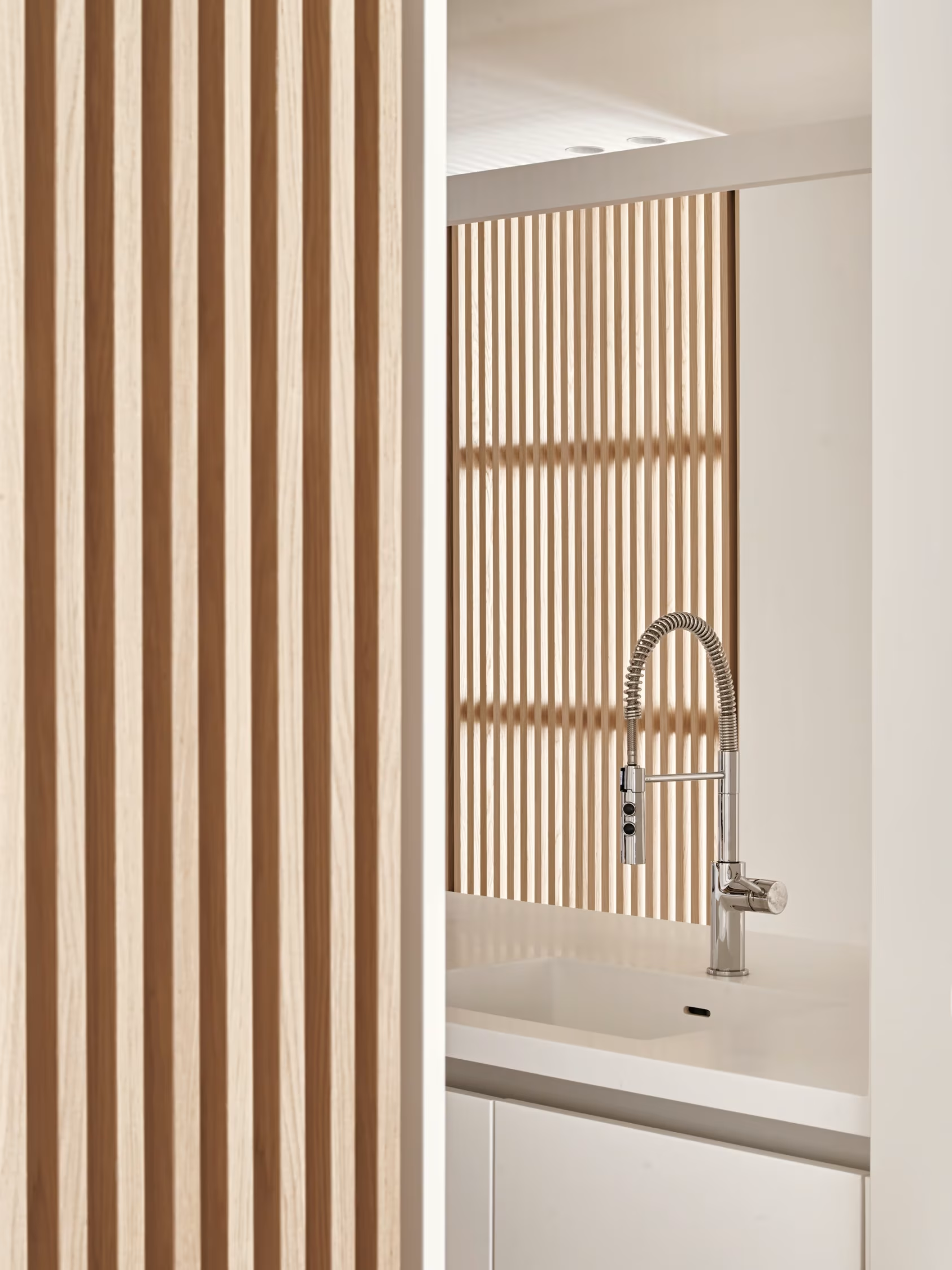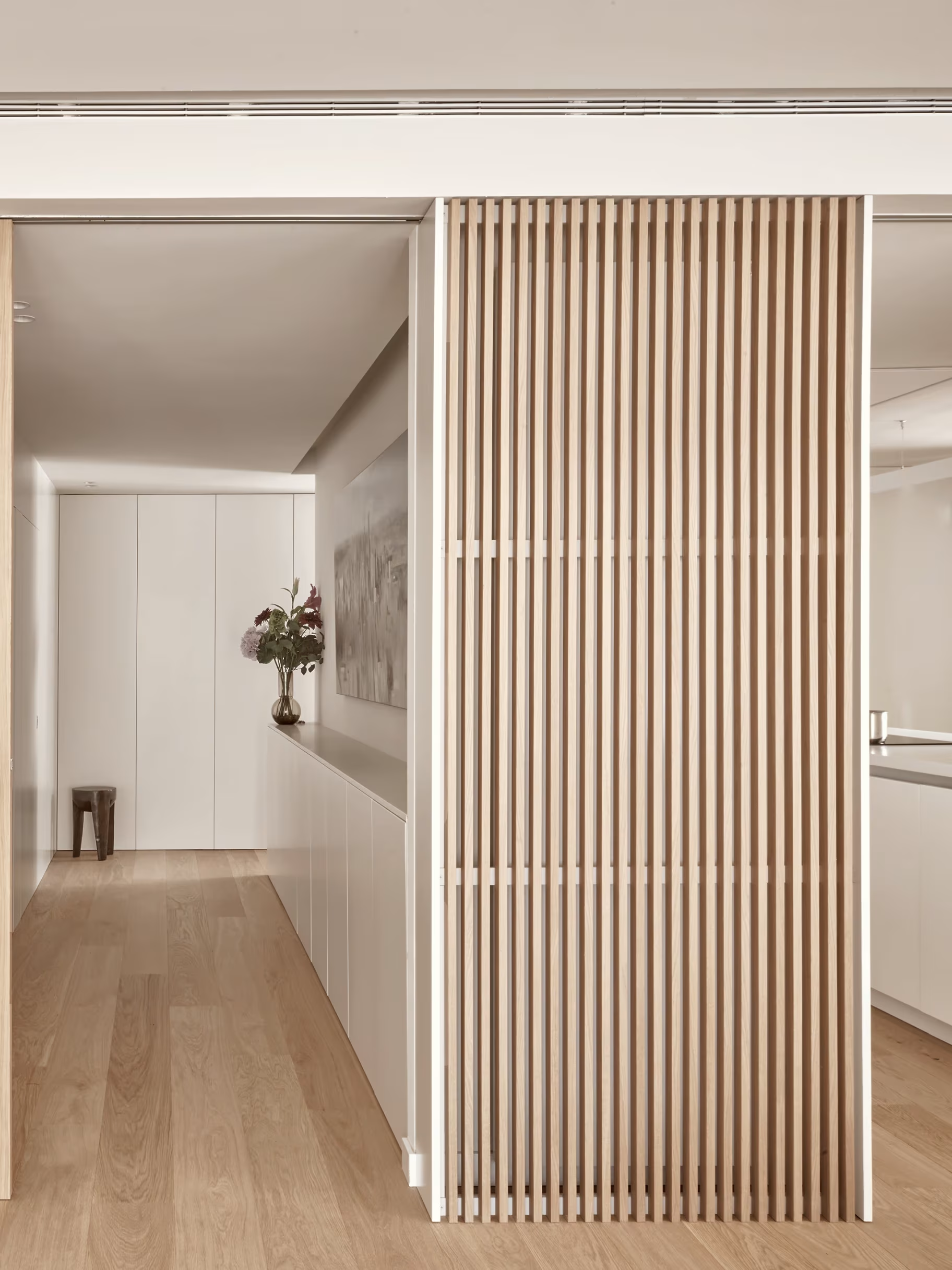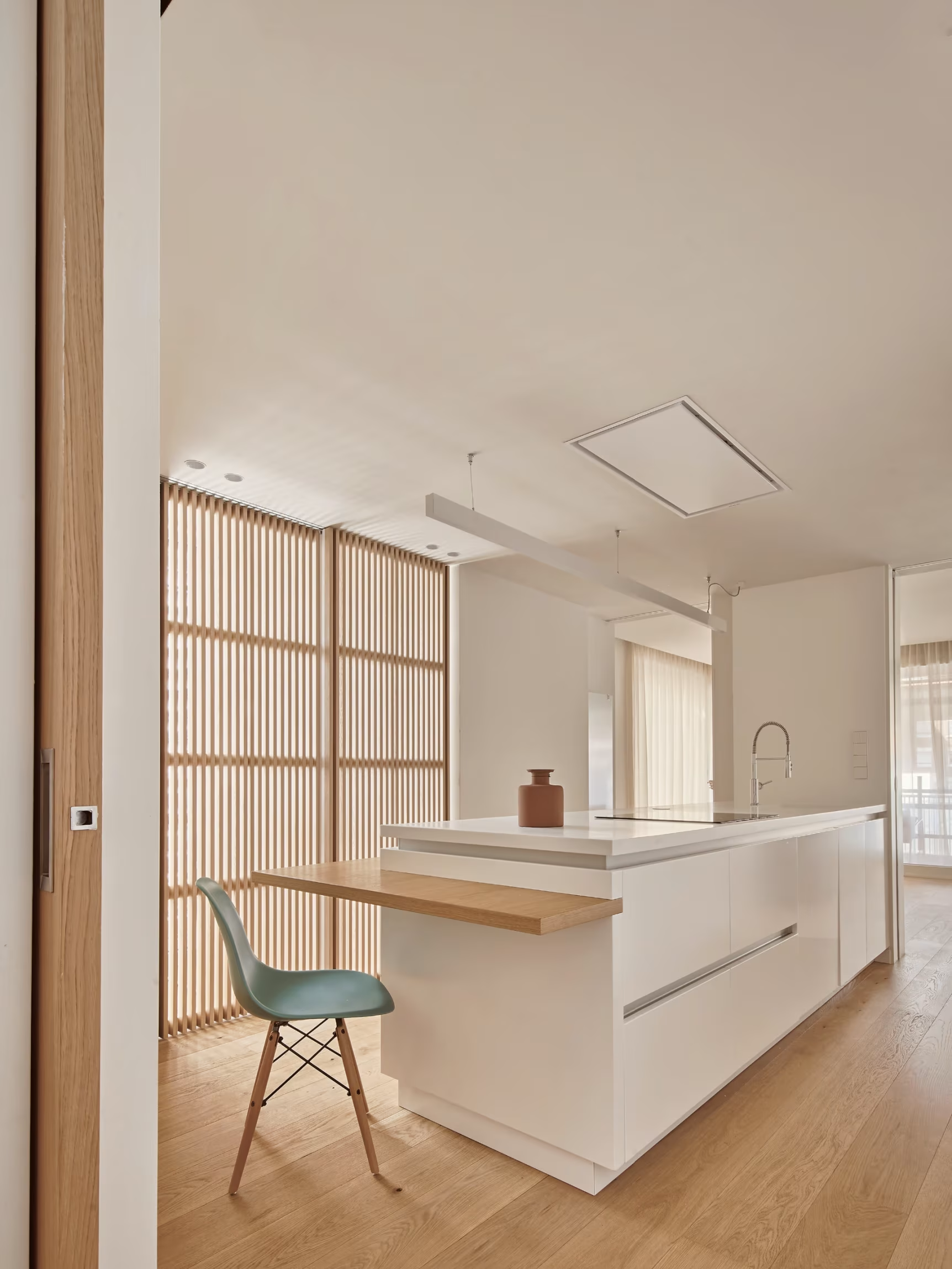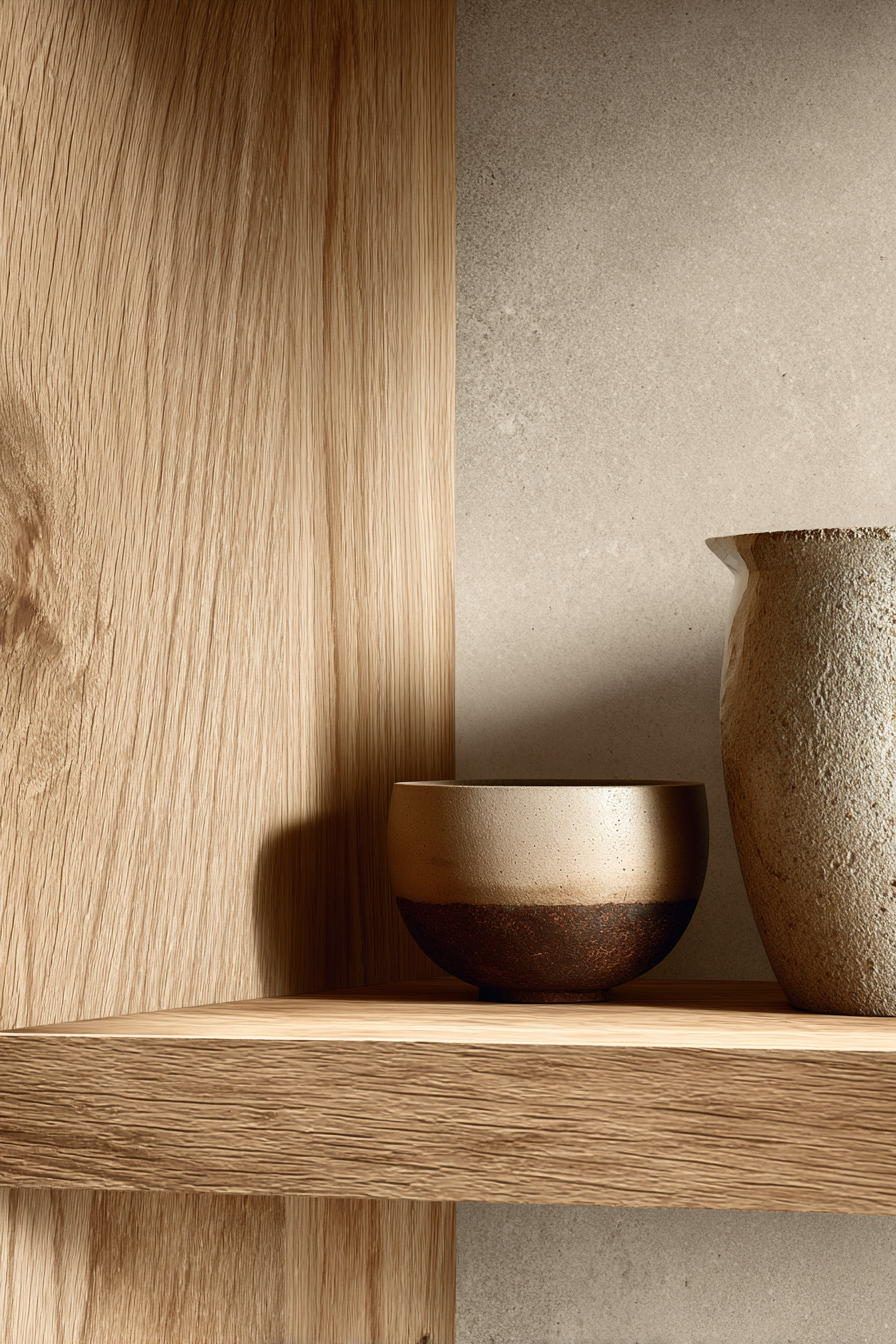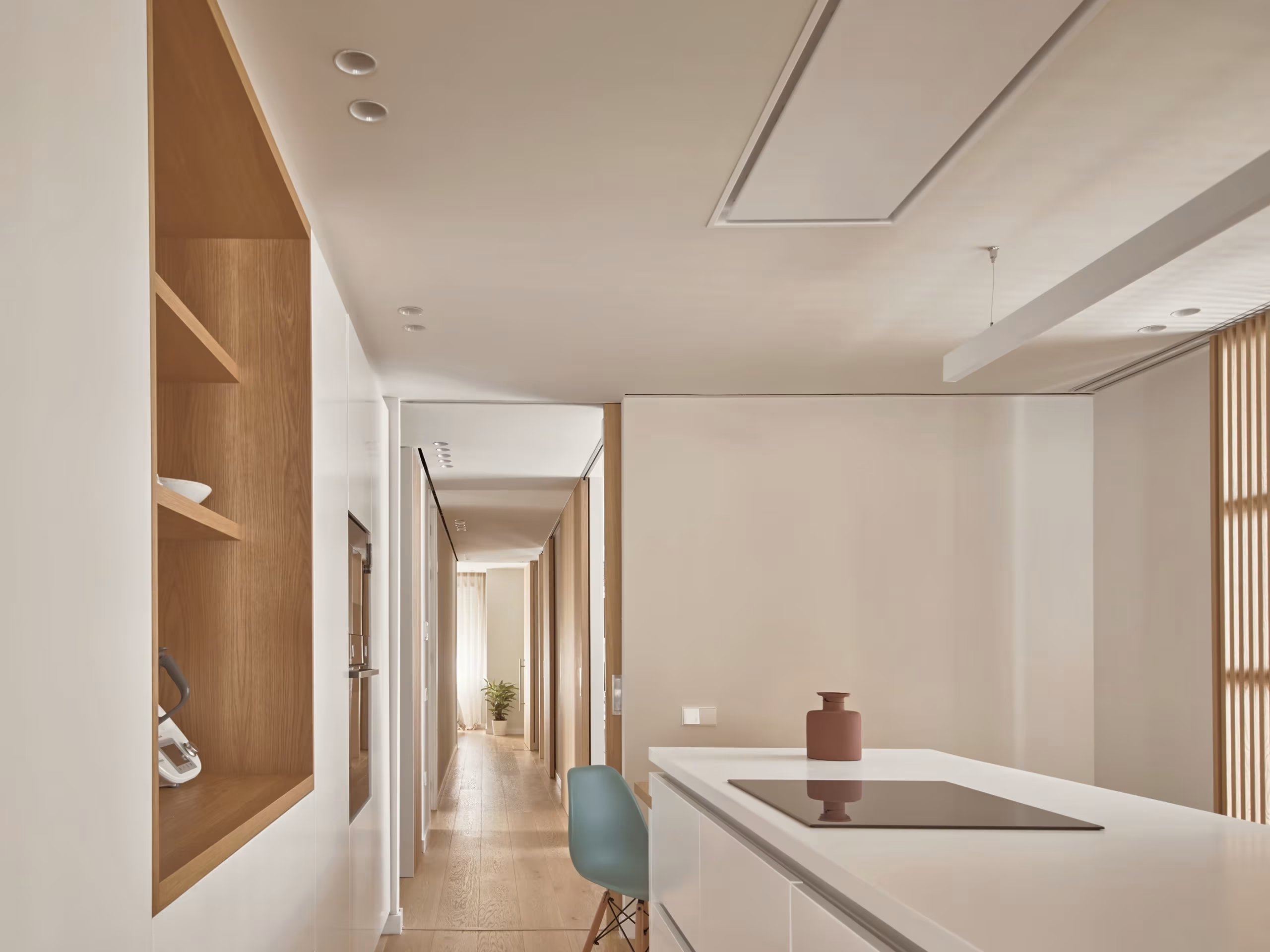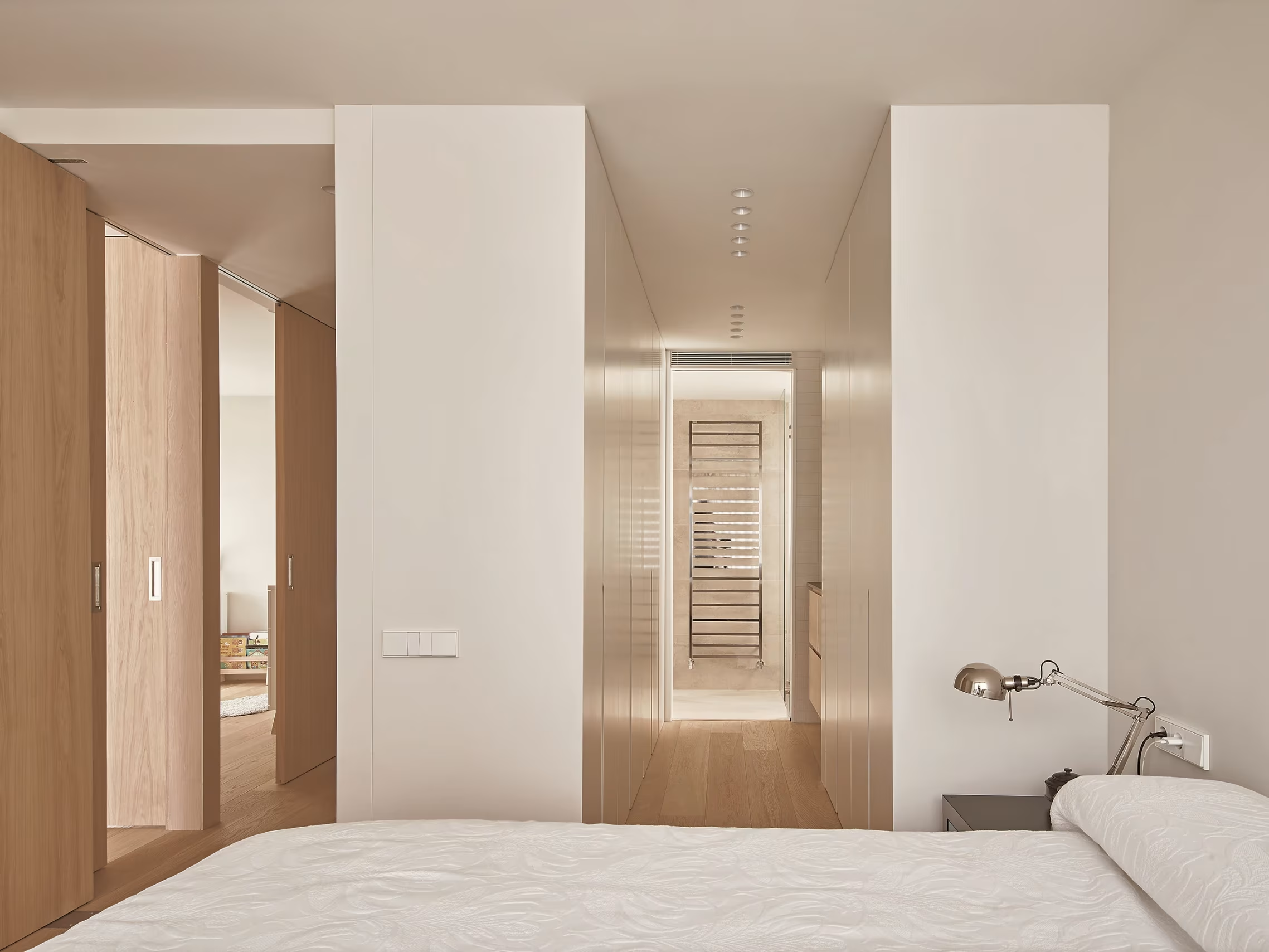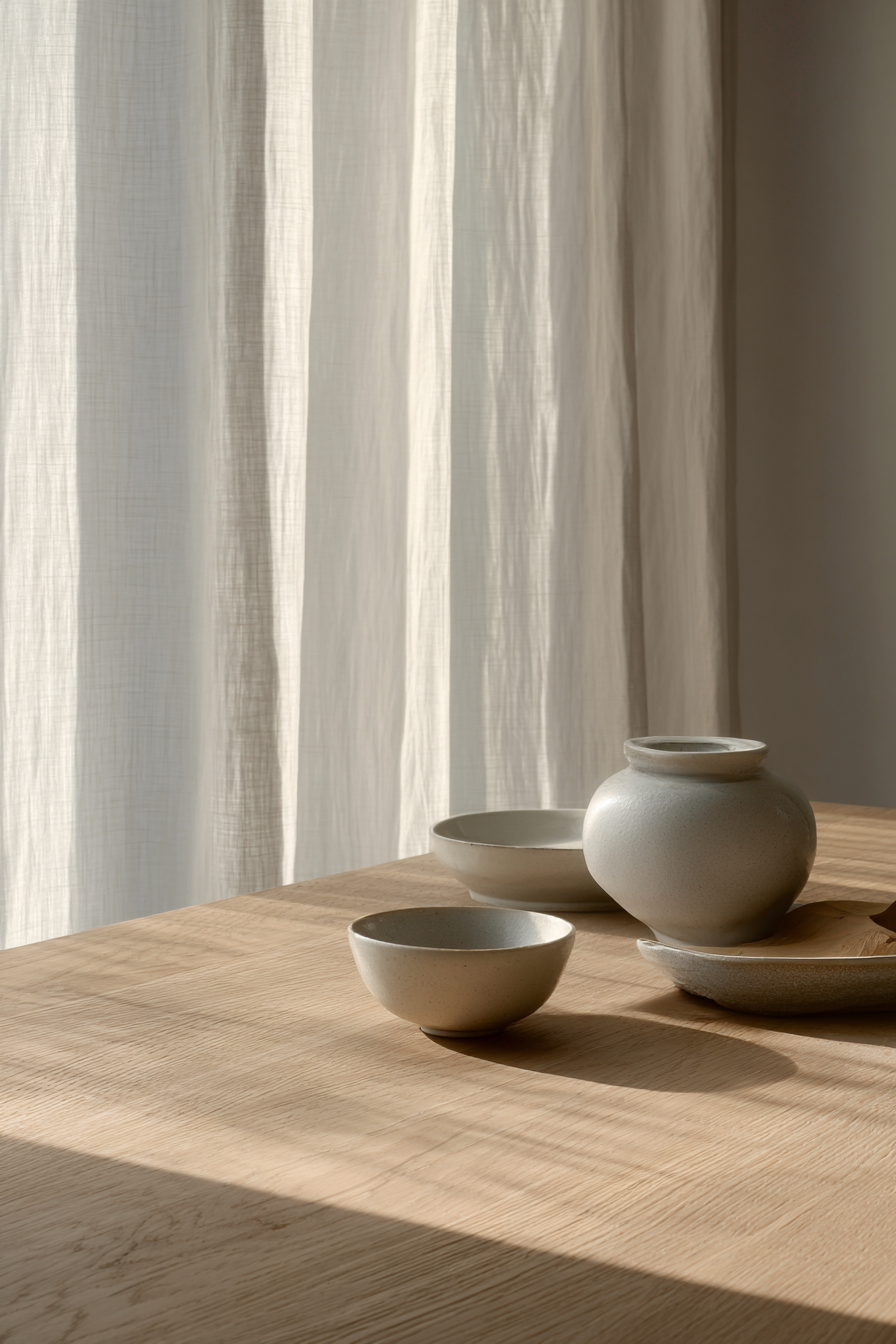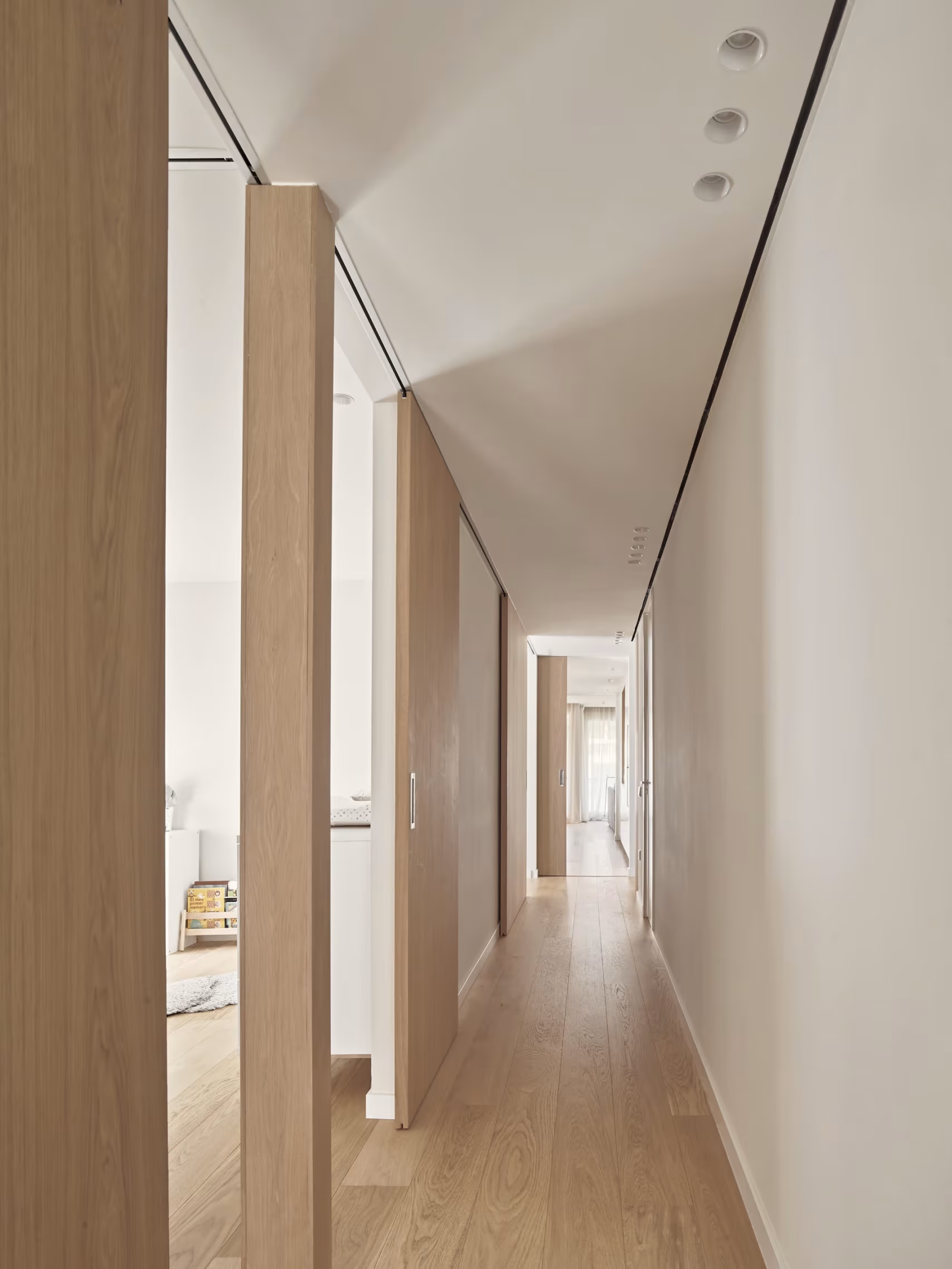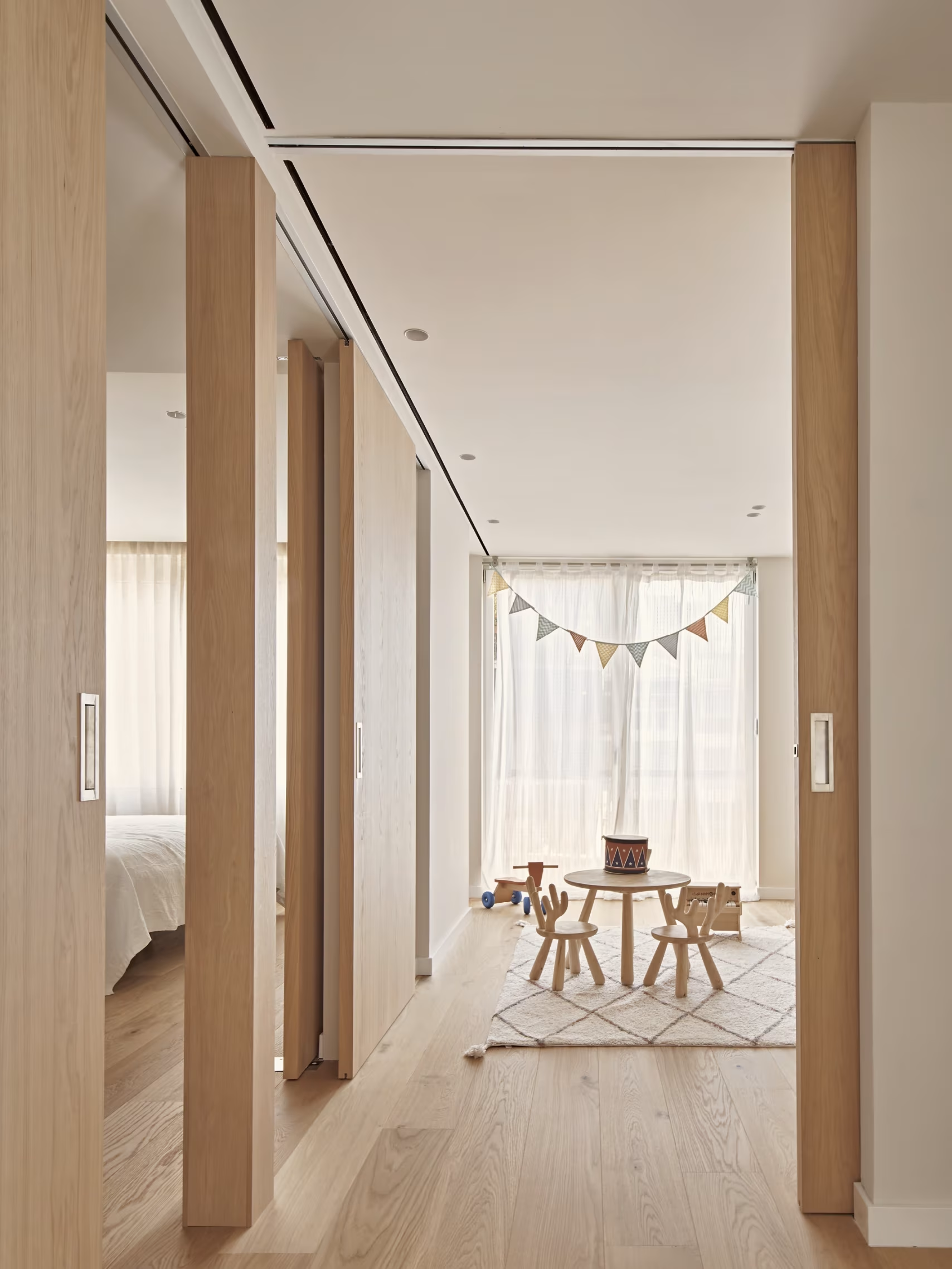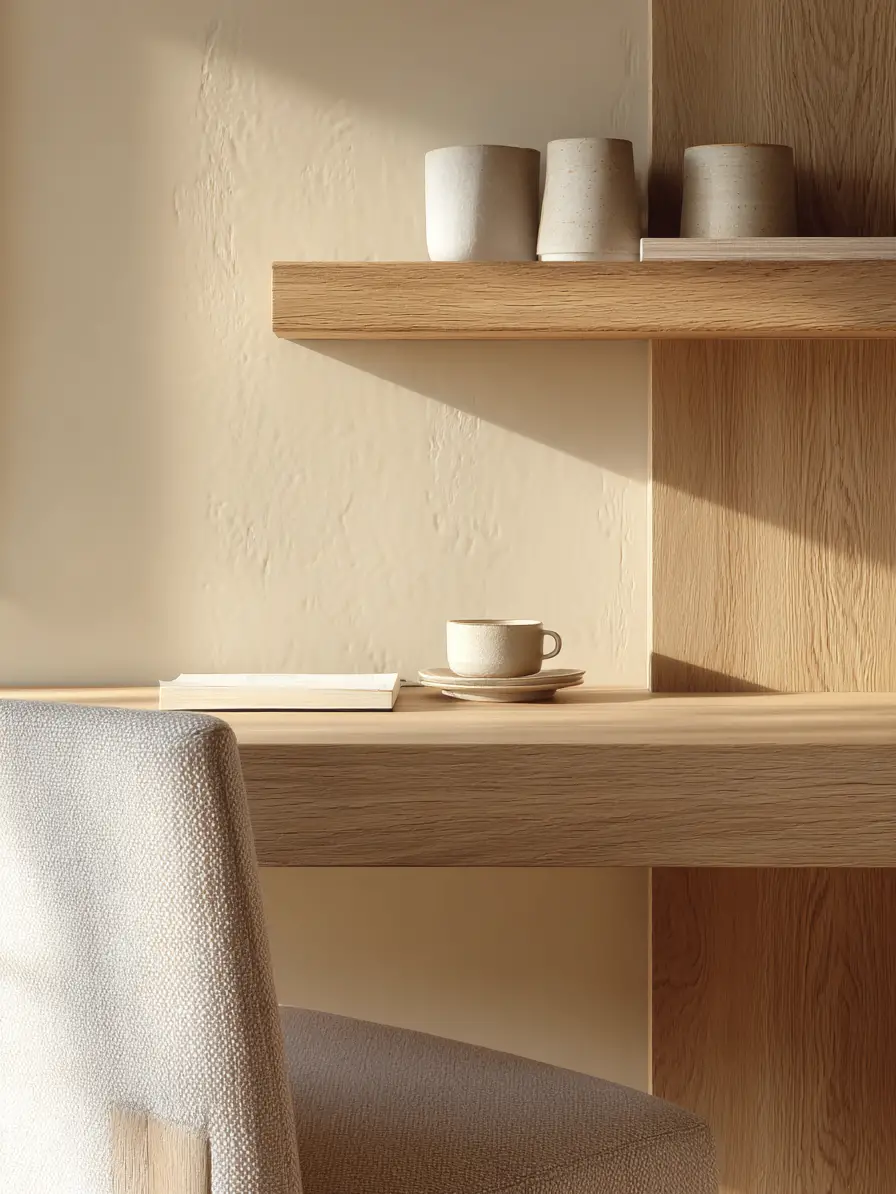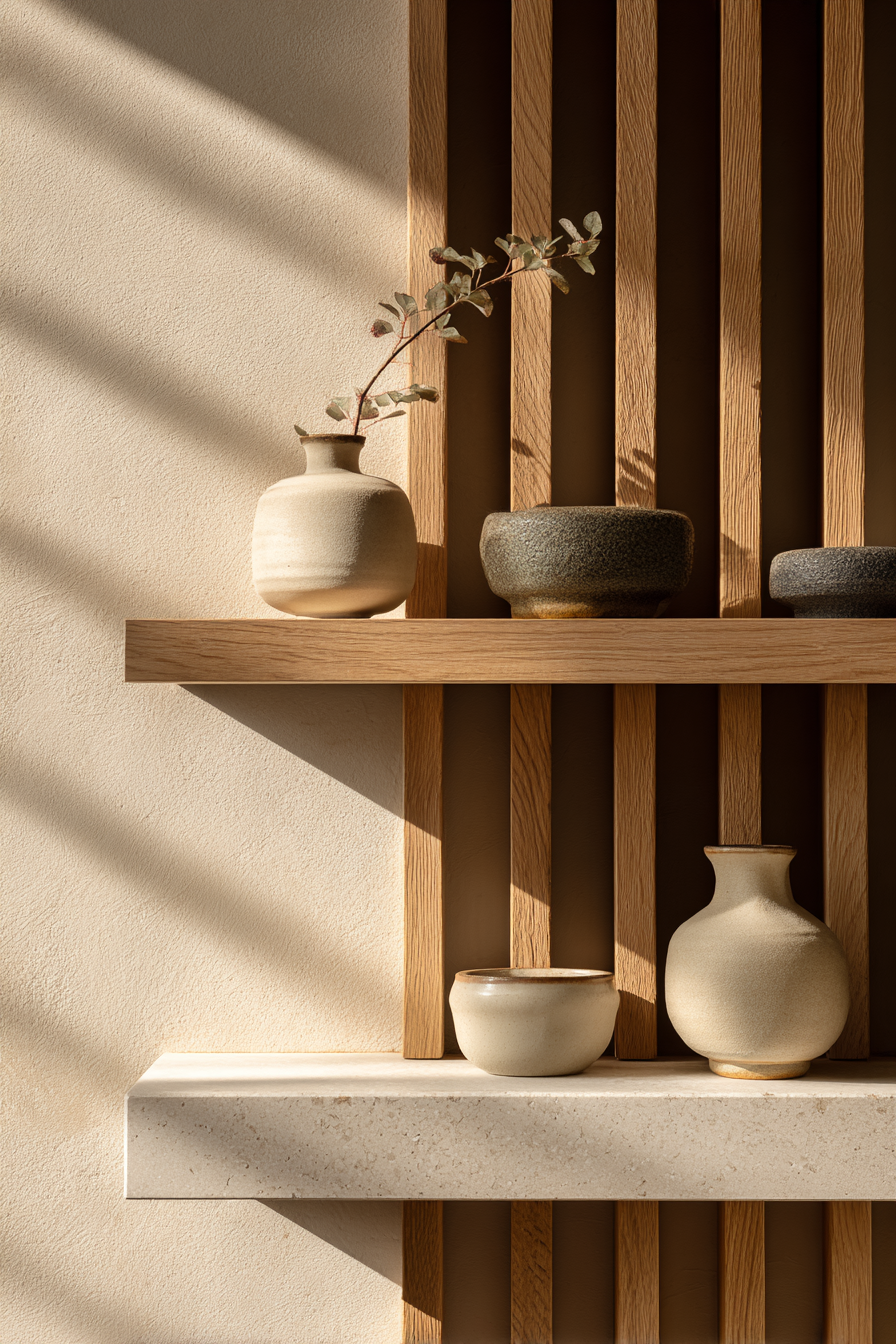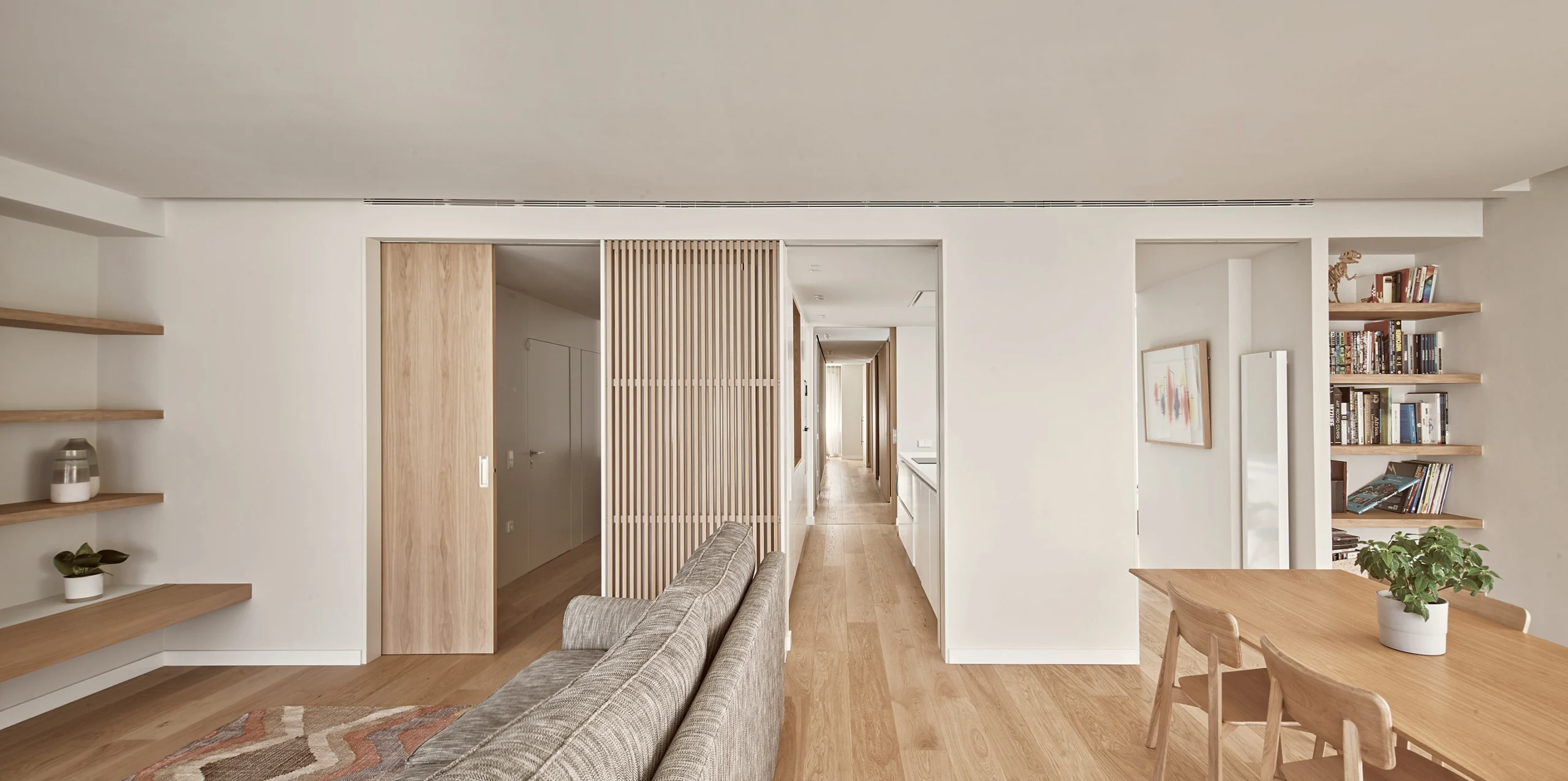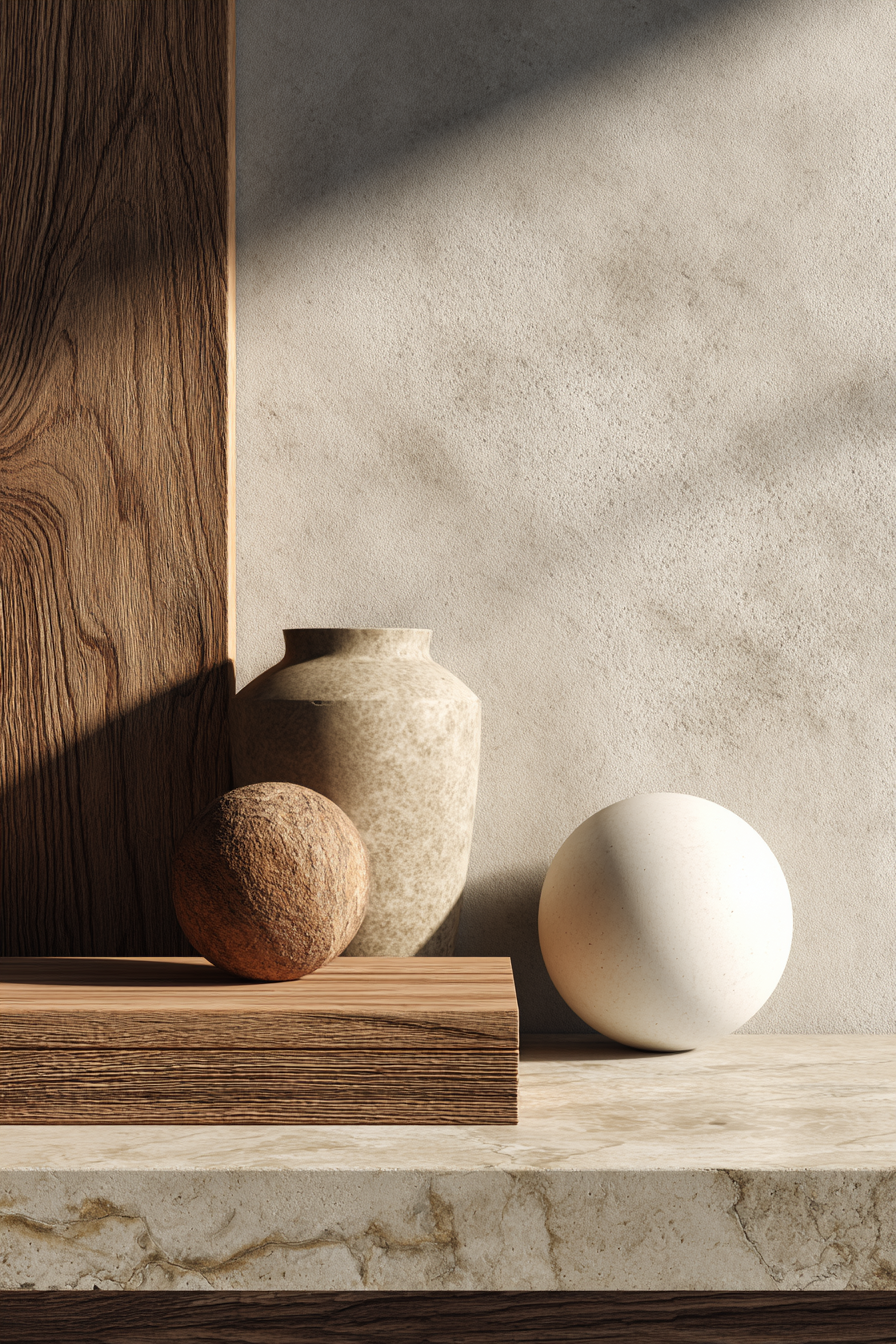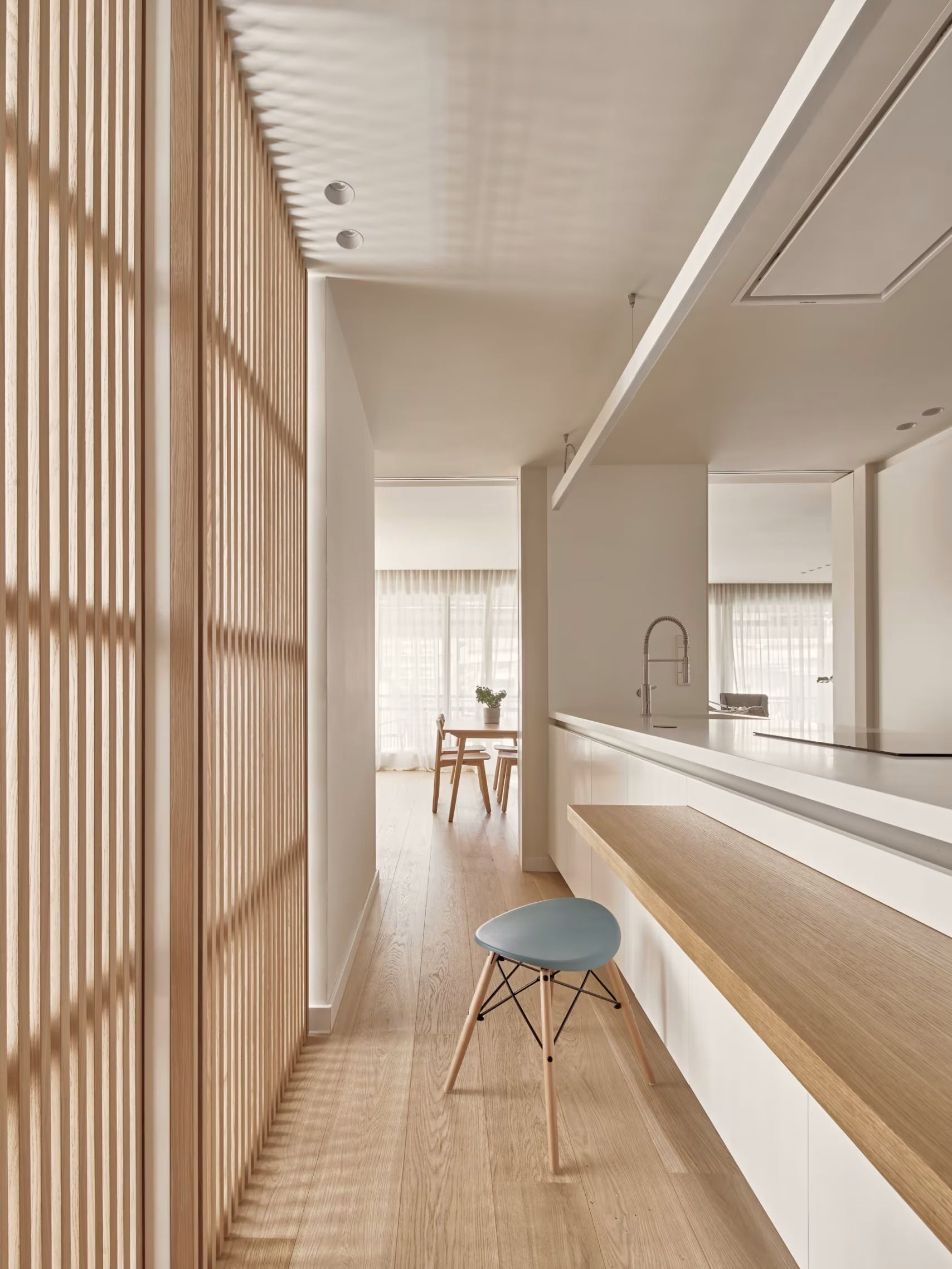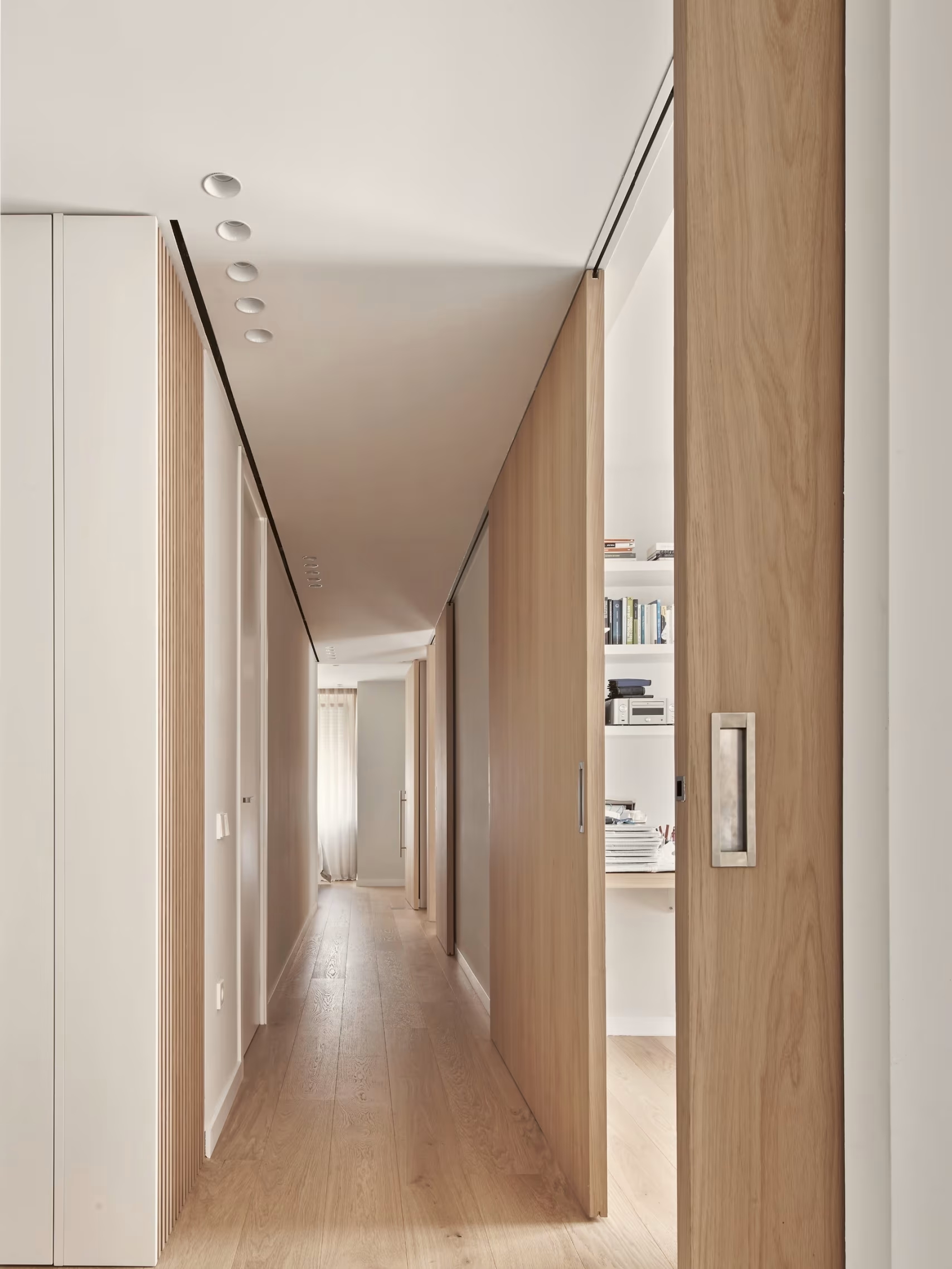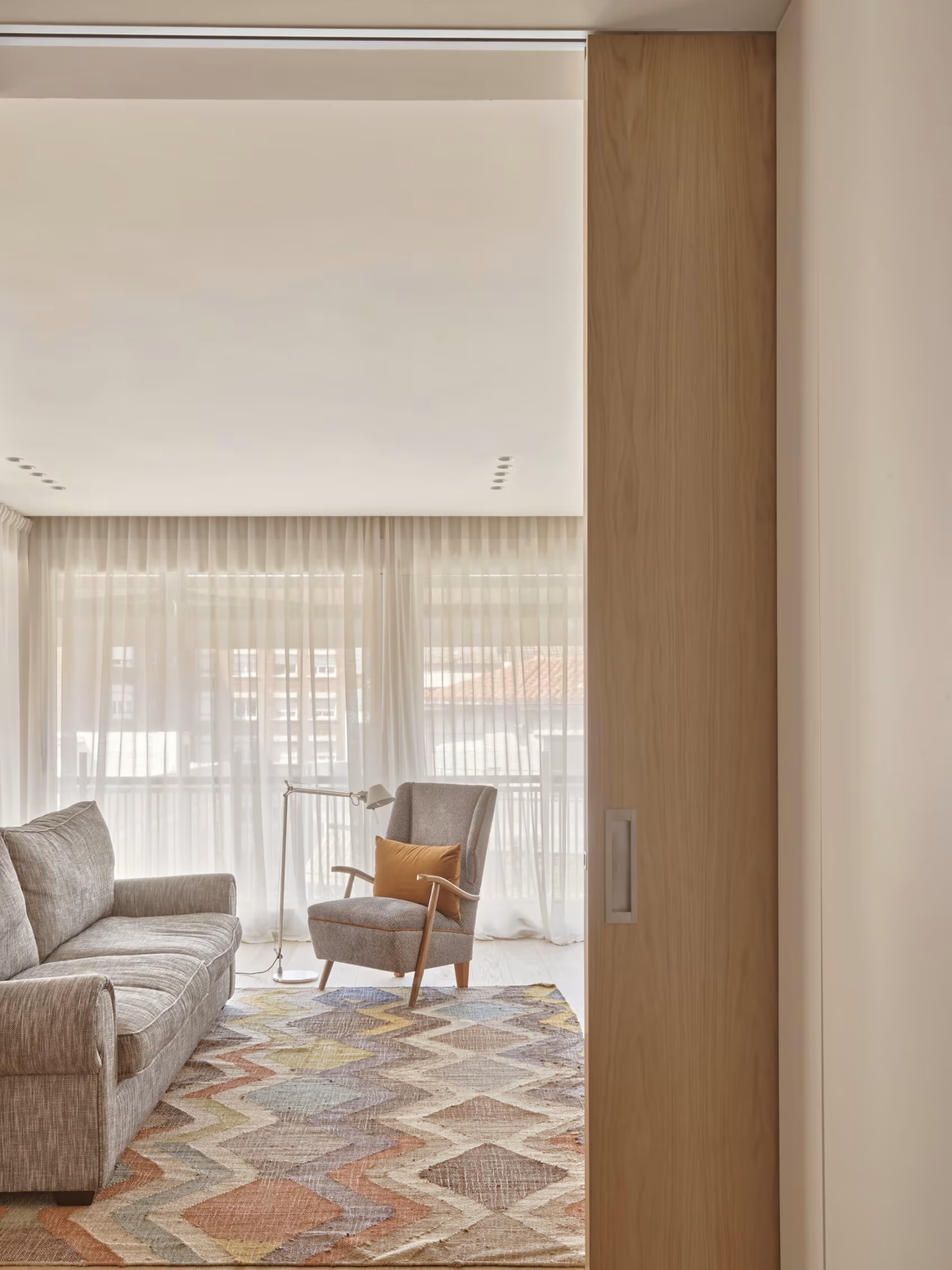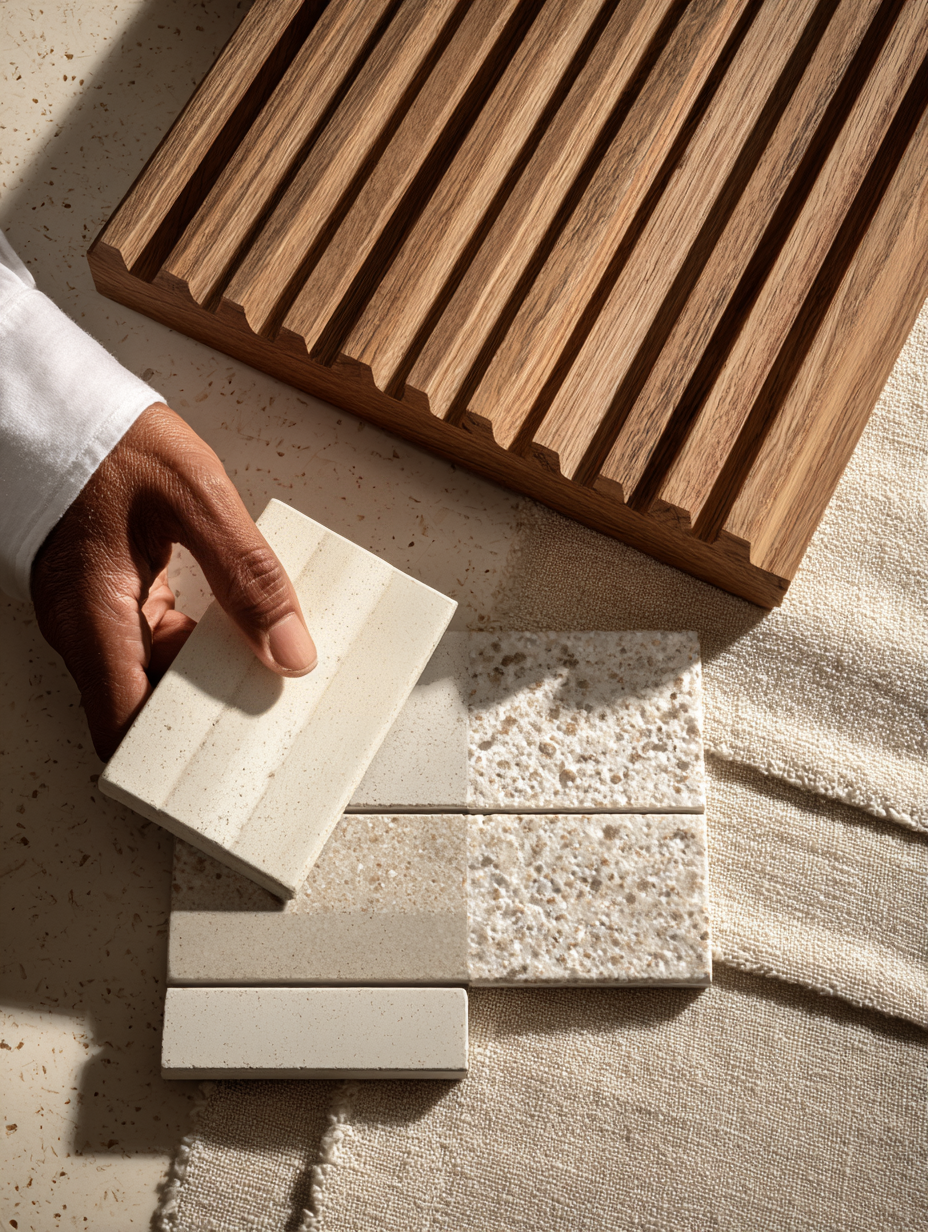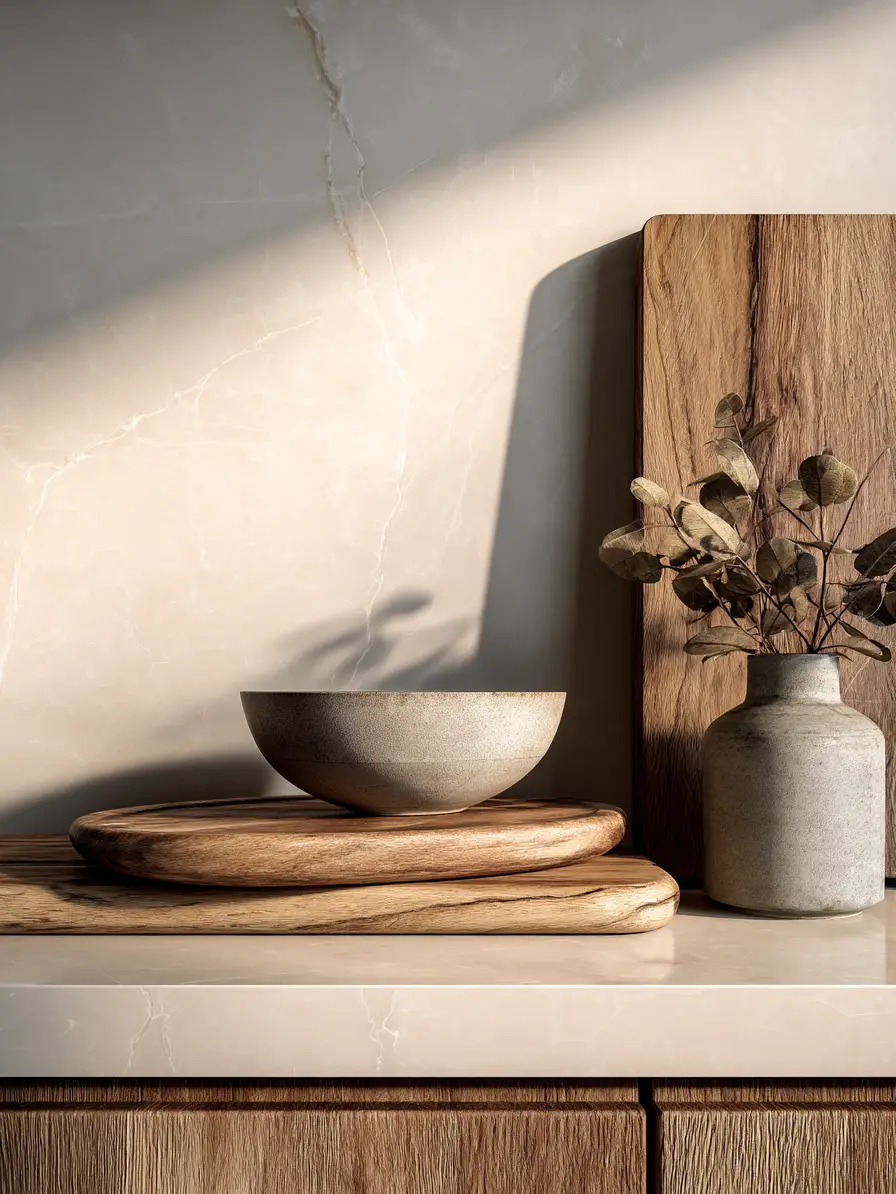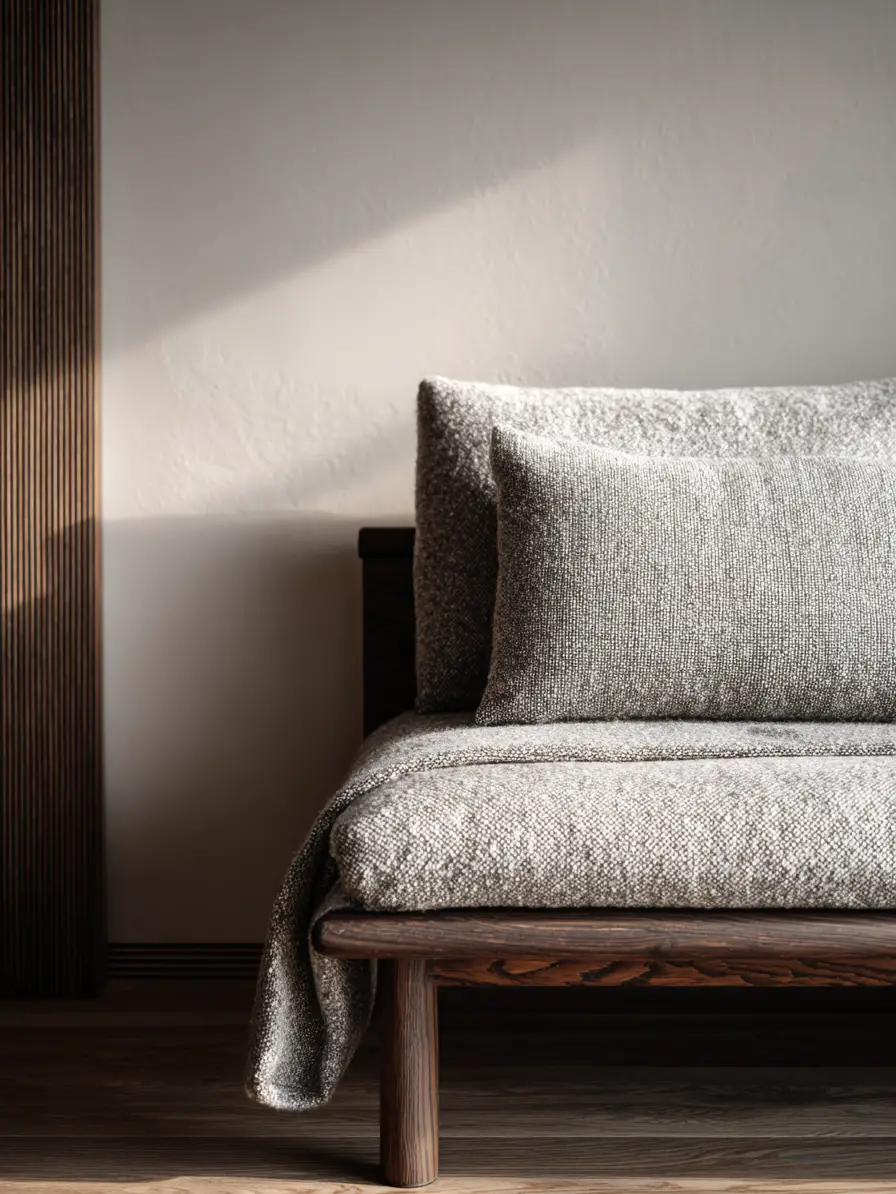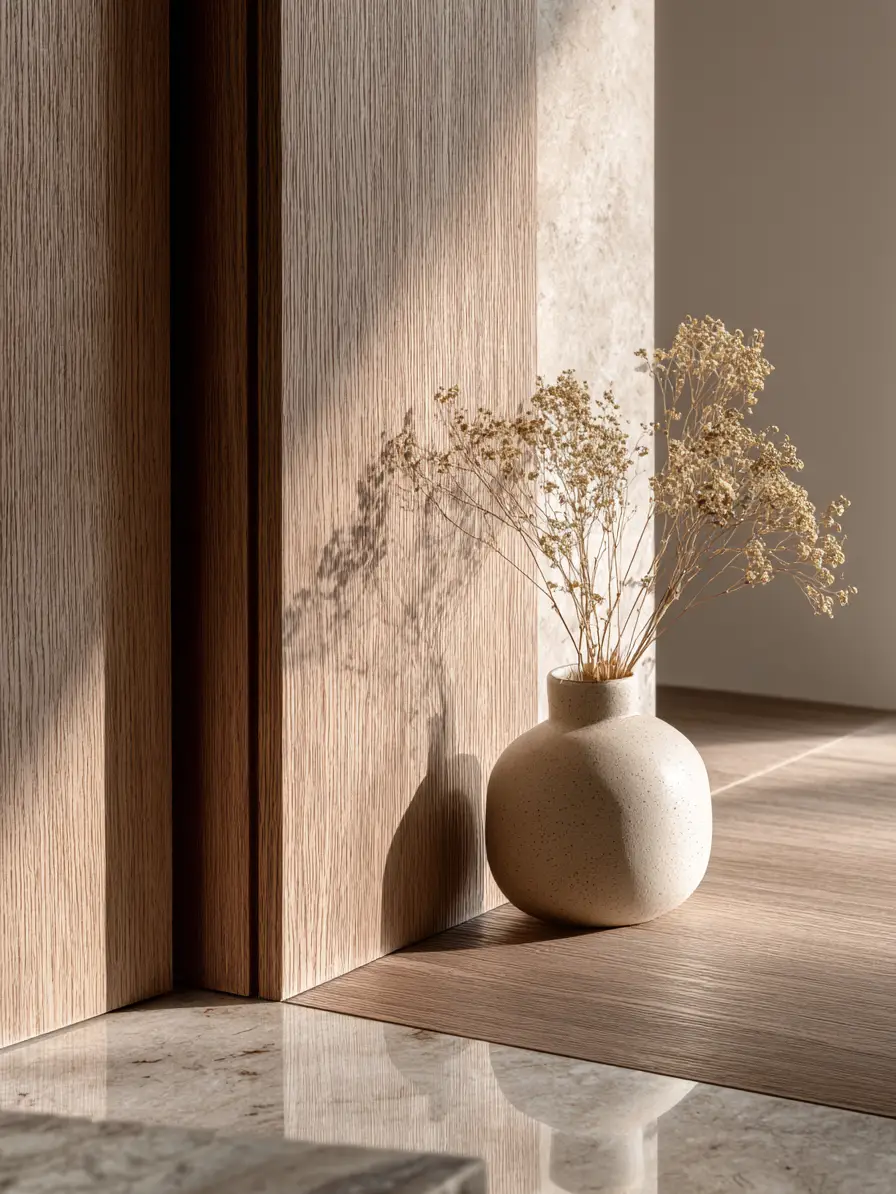Location
Sarrià, Barcelona
Category
Residential
Photography
Jose Hevia, FEM
Year
2020
Perched at the top of a building in Sarrià, one of Barcelona’s most established neighborhoods, this penthouse renovation seeks to reconcile the history of its setting with the demands of contemporary life. Sarrià has long been a district associated with elegance and tranquility, a place where the city reveals a different pace. Its streets, lined with gardens and calm avenues, recall the atmosphere of a former village, now integrated into the vibrant fabric of Barcelona. Against this backdrop, the project was conceived as a domestic retreat — a place to rise above the intensity of the metropolis, without losing its connection to it.
The apartment, overlooking Calle Anglí, had an original layout typical of its time: a sequence of enclosed rooms, corridors without purpose, and rigid separations between functions. While this arrangement may have once suited another lifestyle, today it felt outdated and restrictive. The task was to transform these limitations into opportunities, opening the home to light, creating fluid connections, and rethinking the domestic rituals of a modern family. The result is a penthouse that feels not only larger and brighter but also profoundly calmer, a place of serenity above the city.
The project embodies a belief that true calm is found not in isolation, but in openness — in allowing the horizon, the changing sky, and the subtle beauty of nature to flow into the spaces we inhabit.
Serenity is not created by adding more, but by choosing less — by letting noble materials speak quietly, shaping spaces that calm the mind and soothe the senses.
From the outset, light was considered the main material of the project. Rather than being treated as a passive condition, it became the central protagonist, shaping decisions about orientation, layout, and finishes. The living areas were opened entirely towards the terrace that runs the length of the façade, ensuring that the main social spaces — lounge, dining, and kitchen — remain in constant dialogue with the exterior.
The oak flooring, selected for its tactile warmth, also serves as a subtle reflector, diffusing light across surfaces and amplifying its presence throughout the apartment. Sheer curtains soften the intensity of the sun, allowing light to be felt as a gentle presence rather than a harsh glare. Walls in creamy white tones extend this luminosity, becoming canvases for changing atmospheres during the day. Morning light brings clarity; afternoon light, warmth; and evening shadows introduce intimacy.
This focus on light was not simply aesthetic but deeply connected to the wellbeing of the inhabitants. Returning home after a day of work in the bustling city, the family encounters spaces suffused with a calm brightness that restores balance and encourages rest. The architecture thus becomes a tool for serenity, framing light as both a physical and emotional presence.
The guiding principle of the renovation could be described as “serene minimalism.” Rather than pursuing minimalism as a purely formal exercise, the aim was to achieve a sense of quiet clarity that is both warm and livable. The apartment avoids superfluous gestures and decorative excess, focusing instead on simple lines, rational proportions, and materials that age gracefully.
Serenity here does not mean emptiness. On the contrary, it arises from balance: between openness and intimacy, between order and flexibility, between modern clarity and the quiet elegance of selected classic furnishings. Spaces are generous yet never overwhelming, detailed yet never ostentatious. Everything has its place, and everything is designed to support daily life with ease.
Working with light means working with time itself — allowing spaces to evolve with the shifting sun, and letting each hour leave its quiet trace upon the architecture.
Essential living is not about scarcity, but about focus: creating spaces where only what matters remains, and where serenity grows from clarity and order.
At the heart of the home lies the open kitchen by Santos. Its central island is not merely a functional element but a symbolic anchor — the place where life unfolds throughout the day. In the morning, it becomes a space for breakfast before school or work. During the afternoon, it is a setting for casual conversations, children’s activities, or a shared snack. In the evening, it transforms into the table around which the family gathers, cooking and dining together.
This centrality is reinforced by the open plan: rather than isolating the kitchen, it is directly connected with the living room and dining area. The result is a home where no one is ever truly apart, where activities and conversations overlap, and where the architecture itself encourages connection.
Even the private areas of the home reflect this philosophy. The children’s rooms, for example, are linked by large sliding partitions that can open to create one generous play space or close to allow independence. This flexibility not only meets the needs of the present but anticipates future changes, ensuring the home remains adaptable as the family grows.
“
We looked back to the memory of Mediterranean courtyards to design a house that breathes, illuminates, and calms.
- POL FEMENIAS (ARCHITECT)
The project works with a deliberately reduced palette of materials. Oak wood is the constant thread, defining floors, doors, and selected furniture. Its natural warmth grounds the spaces, providing tactile richness that balances the clean lines of the architecture. Creamy walls and lacquered whites amplify brightness, while subtle textures — in fabrics, curtains, and classic furniture pieces — add depth and softness.
Integration was a key concern. Technical systems were updated to modern efficiency standards and concealed wherever possible, ensuring that the calm order of the design was not disturbed by visible mechanisms. Built-in storage solutions further reinforce this clarity, allowing surfaces to remain uninterrupted.
Among the crafted details, the fireplace stands out: minimal in form, seamlessly integrated into the wall, and complemented by floating oak shelves. This composition demonstrates the overall approach — functional yet discreet, blending utility with elegance. Similarly, sliding slatted panels introduce rhythm and transparency, filtering light while offering the possibility of separation when required.
True elegance often lies in what remains unseen. The wooden grid not only adds rhythm and refinement but also conceals the necessary, ensuring that technical demands never disturb the serenity of the space.
When architecture chooses less, it achieves more. A minimal set of textures — wood, stone, plaster — becomes enough to shape spaces that feel timeless, grounding, and quietly rich.
Perhaps the most significant transformation lies in the perception of space. By eliminating unnecessary corridors and residual corners, the project restores generosity to the plan. Movement through the apartment is no longer about passing through narrow hallways but about experiencing continuous flows and long views.
The corridor, once a leftover space, is now conceived as a gallery. Concealed storage lines its walls, while oak flooring and diffused light turn it into a place of calm transition. Rather than being wasted, every surface contributes to the overall atmosphere of serenity and order.
This sense of openness is also achieved through the visual alignment of rooms. Standing in the living area, one can see across the kitchen to the terrace, or from the bedroom through to the bathroom. These long views extend the perception of space, creating an architecture that feels larger than its physical dimensions.
While the renovation achieves architectural clarity, its deeper success lies in how it supports the lives of its inhabitants. Every decision, from the orientation of rooms to the choice of materials, was guided by the desire to enhance comfort, connection, and wellbeing.
The minimalism of the apartment is not cold but hospitable. The oak floors invite barefoot walking; the terrace encourages outdoor moments in the sun; the central island calls for gatherings. The spaces are not designed to impress visitors but to provide a backdrop for everyday rituals — cooking, playing, resting, reading.
Even the introduction of selected classical furniture pieces was a deliberate gesture, ensuring that the home feels layered, personal, and timeless. These touches anchor the contemporary shell with a sense of heritage and elegance, reinforcing the balance between old and new.
This penthouse in Sarrià stands as an example of how architecture can transform not only physical space but also the experience of daily life. By prioritizing light, flexibility, and serene minimalism, the project creates a home that is generous without being excessive, rational without being cold, contemporary without losing warmth.
Above the city, it becomes a refuge — a place where the family finds comfort in openness, where light defines the rhythm of the day, and where materials resonate with calm tactility. In essence, it is a home that embodies what it means to live well: simplicity, connection, and serenity.
Texture is what turns space into experience — the grain of wood, the roughness of stone, the softness of fabric all converging to shape an atmosphere that can be felt as much as seen.

